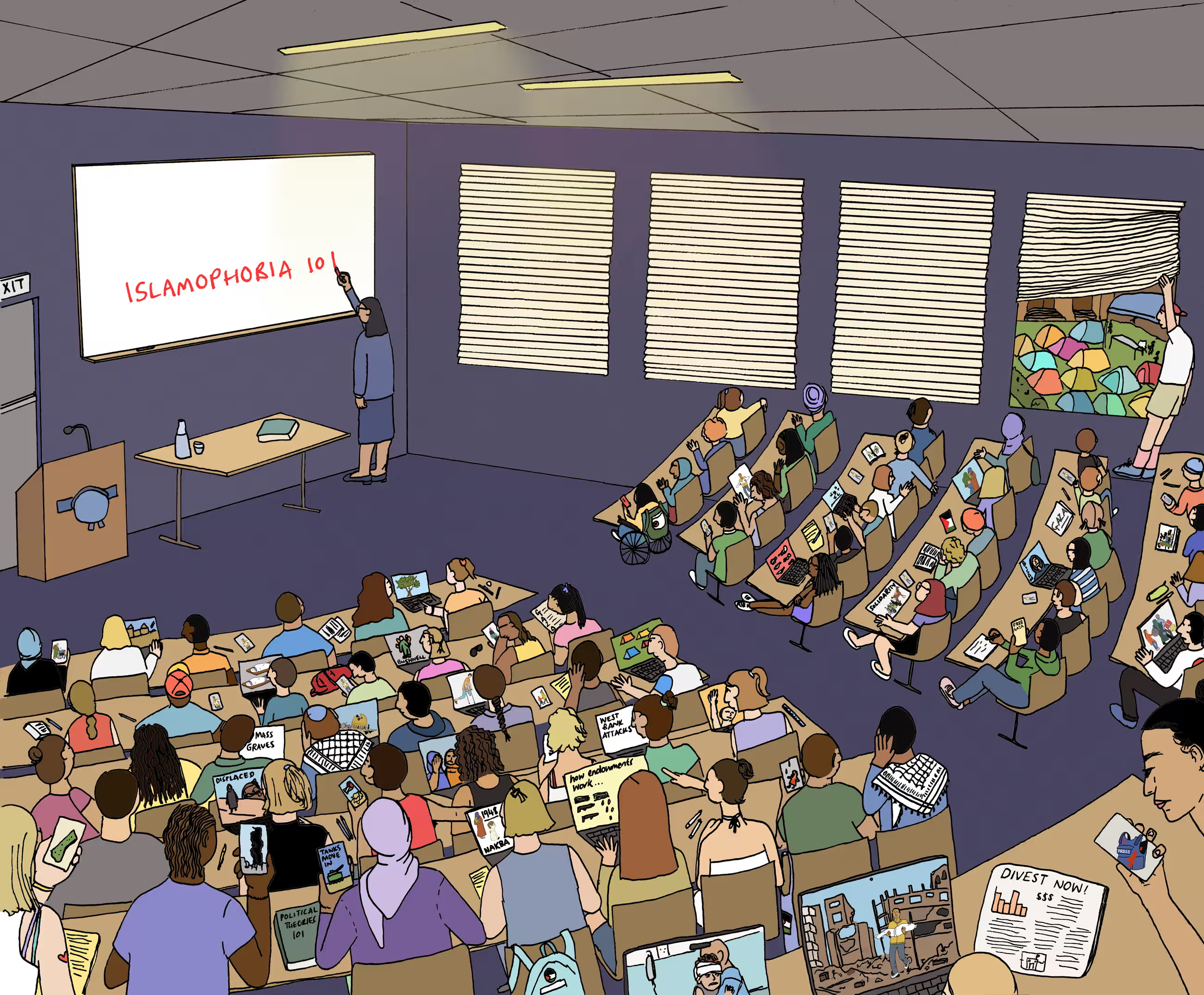Decades of spying and repression: the anti-Palestinian origins of American Islamophobia
I wrote this feature for The Guardian on how it is often assumed that Islamophobia is the driving force behind US anti-Palestinian bigotry. In fact, it’s the other way around. (Illustrated by the great artist Mona Chalabi)

One evening last Thanksgiving weekend, three 20-year-old Palestinian college students were strolling around Burlington, Vermont, when they were suddenly gunned down by a stranger. One of the victims, Hisham Awartani, is now paralyzed from the waist down. Since they were wearing keffiyehs and speaking Arabic and English, speculation ran high that the young men had been victims of an Islamophobic attack.
The BBC noted that the attack “comes as the US deals with a surge in Islamophobia and antisemitism since the start of the Israel-Gaza war”. Vermont’s Middlebury College described the shooting as evidence of “a marked increase in Islamophobic acts on American campuses and beyond”. A White House statement mentioned how “far too many people live with the fear that they could be targeted and attacked based on their beliefs or who they are”.
But that’s not how Elizabeth Price, the mother of Awartani, seemed to understand the attack. She told WNYC radio that she had raised three children in the West Bank, where children routinely encounter Israeli state and settler violence, and she never believed Hisham would be targeted in the US. In the US, she said, she thought he “would be somewhere safe … I had not realized that to be Palestinian is to be unsafe and I understand that now, that you can’t, as a Palestinian, if you are proud and open as a Palestinian, protect yourself.” For Price, Hisham was a victim not primarily of Islamophobia but of anti-Palestinian violence.
We hear a lot of talk these days about Islamophobia, anti-Arab racism, and anti-Palestinian bigotry, usually in that order. But which actually came first?
In the United States, Islamophobia is commonly seen as the motor that drives anti-Arab racism, a subset of which is anti-Palestinian bigotry. And yet, American history doesn’t quite abide by this order. In fact, it’s the opposite.
In US history, anti-Palestinian bigotry, expressed primarily through repressive practices of the US government, almost always came first. This anti-Palestinianism then manifested into a generalized anti-Arab racism, which only later – especially after 9/11– morphed into the more widespread Islamophobia that we recognize today. Understanding this history can not only help explain the complex ways that both anti-Palestinianism and Islamophobia operate in the United States but can also point to what is missed when anti-Palestinian bigotry is subsumed into the frame of Islamophobia.
Read the rest here.